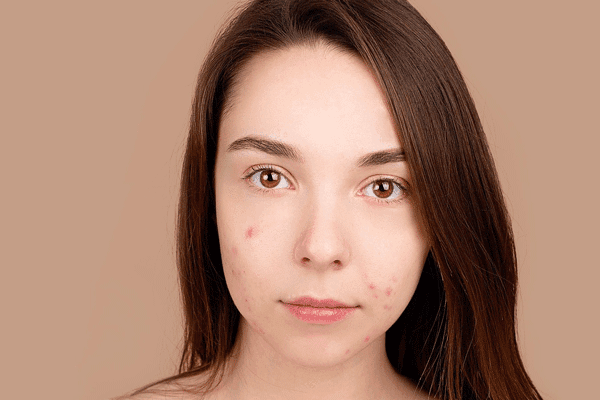Acne is especially prevalent among teens and young adults – impacting around 85% of those between 12 and 24, according to one estimate – but it can affect men and women of all ages.
Add to this the fact that acne can present a range of symptoms that vary in both appearance and severity and it makes sense that other skin conditions are sometimes mistaken for acne, and the other way around. Not all skin conditions are treated the same, of course. So, while rosacea may look or feel like acne, it’s not going to respond to typical acne treatments.

Another example: Hidradenitis suppurativa is an autoinflammatory condition that shares some of the same traits as acne, but if it’s mistakenly treated as acne – or if it’s left untreated – it can evolve into a painful cycle of cystic flare-ups and cystic scarring.
Acne is so common that it’s enticing to try to self-diagnose and self-treat it. And then, by the time you see a board-certified dermatologist about it, the condition has worsened, because it’s not actually acne.
In the case of hidradenitis suppurativa, it’s best to see a dermatologist as soon as you suspect anything because, while it is a serious and chronic skin condition, effective treatments exist, and starting one from the onset can make all the difference.
To help with that, here are three ways hidradenitis suppurativa distinguishes itself from acne.
Where to look for it
Both hidradenitis suppurativa and acne originate at the site of an obstructed or occluded hair follicle. Which is to say that both conditions can only show up where hair follicles are present. The locations on the body where hidradenitis suppurativa can crop up can be narrowed down even further than that.
Where acne typically surfaces on exposed areas like the face, back, chest, and arms, hidradenitis suppurativa usually appears at the folds of the skin where the most sweat collects and there’s a lot of skin-on-skin friction, such as the groin, armpits, and butt. The back of the neck is also a possibility.

A noticeable difference in appearance
Another significant difference is the appearance. With hidradenitis suppurativa, you won’t find blackheads or whiteheads. Instead, it presents mostly as cysts and nodules under the skin.
All of the different manifestations of acne develop outwardly from a hair follicle. You see a blackhead, or you see a bump or pustule on the skin. But with hidradenitis suppurativa, much of the process occurs within.
Yes, you can have deep, painful cysts with both. But if you saw a dermatologist and said you have a breakout in a spot on your body where acne doesn’t commonly appear and you only have cysts, they’re more likely to suspect hidradenitis suppurativa than acne.

Scarring of a whole other kind
Acne may look like one large rash, but if you looked closer, you’d be able to see individual lesions within this patch of skin. Hidradenitis suppurativa can start out like this, but over time the cysts can connect and form a network of scar tissue beneath the surface of your skin.
When a hidradenitis suppurativa cyst bursts, the pus or blood that drains out will often connect to the site of a previously ruptured cyst, leaving behind a trail of scar tissue. Without treatment, this can develop, over time, into an intricate network of scar-tissue tracts beneath the skin’s surface.
Acne scarring can certainly happen, but not like this. This is a telltale sign that you’re dealing with hidradenitis suppurativa.



 How Your Skin May Change During Pregnancy and Nursing
How Your Skin May Change During Pregnancy and Nursing